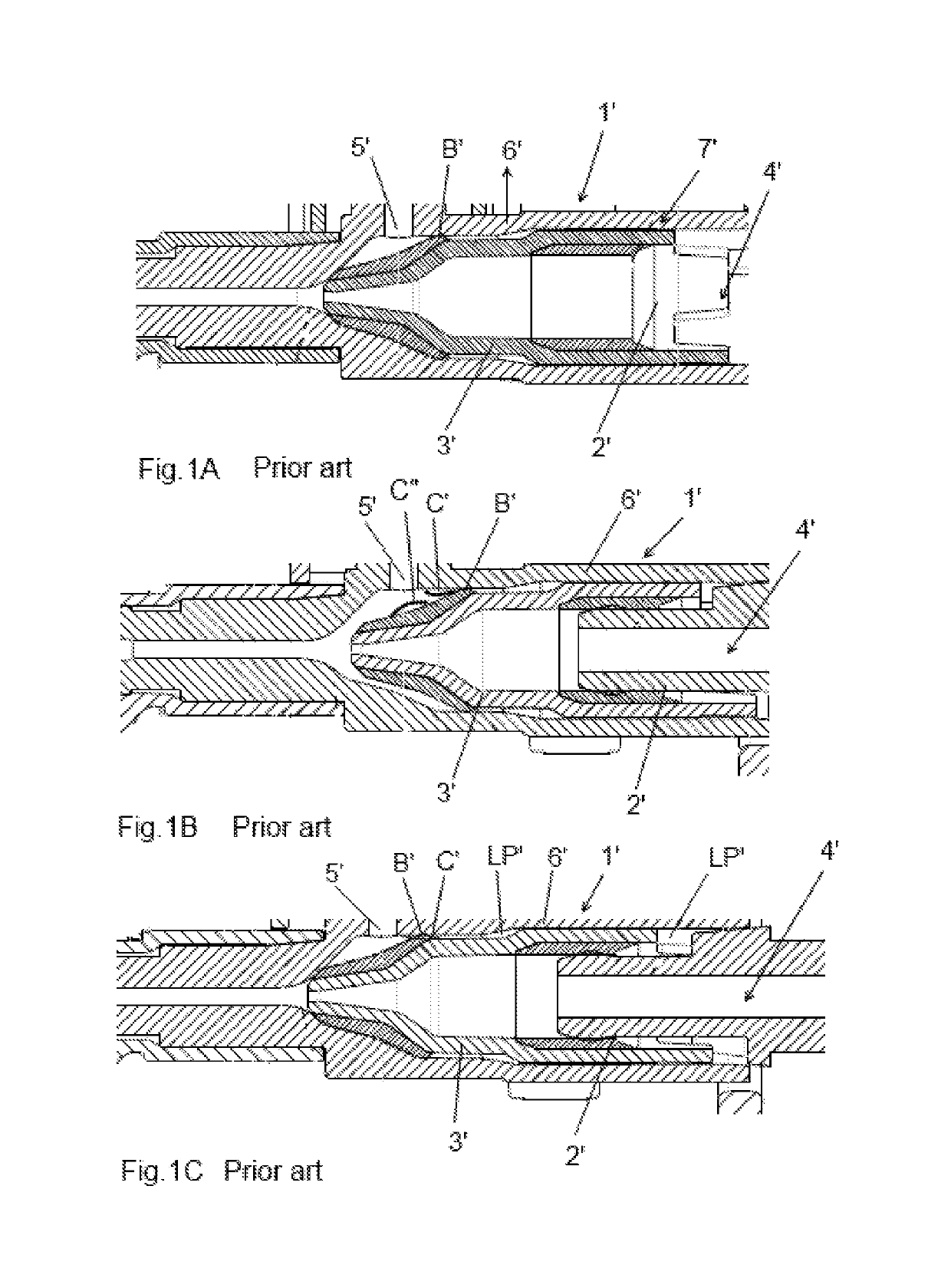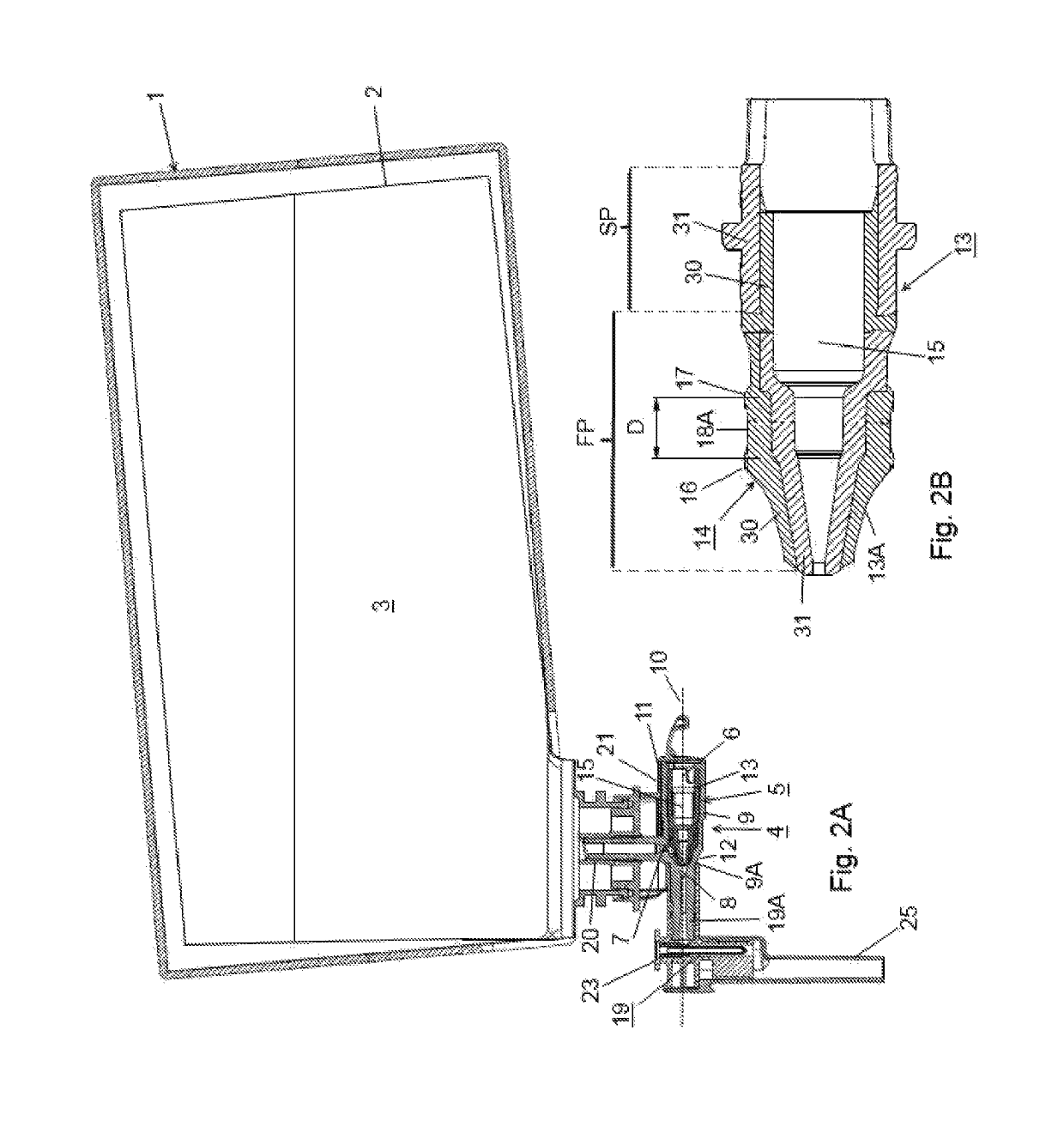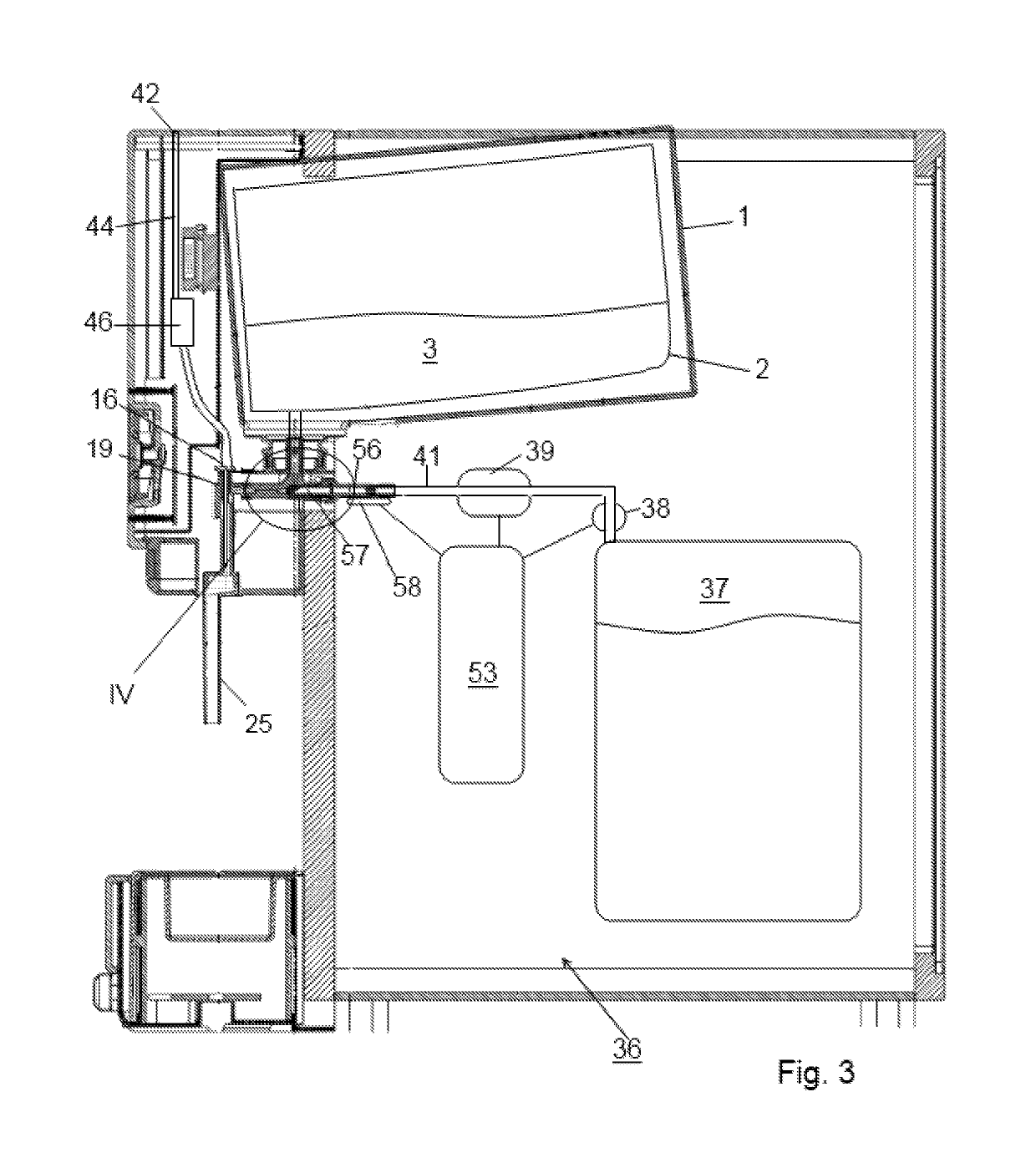[0006]It is therefore an object of the present invention to provide an eductor suitable for use in an assembly for preparing a liquid product, an assembly for preparing a liquid product comprising a holder containing a second liquid and such an eductor, and a system for preparing a liquid product comprising a product preparation apparatus for preparing said liquid product and such an assembly, with which a liquid product, in particular a liquid food product, can be prepared with a high quality over a prolonged period of time with a reduced risk of contamination.
[0008]In an embodiment of an eductor according to the invention the protrusions are made in a first part of a first material withstanding thermal loads (including thermal expansion and thermal shrinkage) exerted thereon while still providing sufficient compressibility and elasticity (i.e. sufficiently short relaxation time) for providing a correct seal, said first part being hermetically attached to a second part of a second material, different from the first material, said second material providing mechanical stability over a prolonged period of time to the first part with the protrusions. By hermetically attaching the protrusions to a second part formation of any fluid communication paths is prevented. It is then preferred that the first part of the first material and the second part of the second material are chemically bonded to each other along their contact surface without using additives or a third material. Such a chemical bonding without any additives or a third material ensures a correct hermetical attachment so that no fluid communications paths or leakage paths are created during use of the eductor over a prolonged period of time. In particular the first part and the second part are formed by two-component injection moulding. Depending on the chosen materials, other methods in which the first and second material are hermetically bonded to each other can be used, such as 3D-printing.
[0009]Alternatively the protrusions can be formed by separate sealing means, such as e.g. O-rings or equivalent, which separate sealing means are permanently and hermetically attached to the outer surface such that no fluid communication path or leakage path is formed. Such permanent attachment can e.g. be realized by means of gluing, heat sealing, etc. However, depending on the thermal and / or mechanical loads exerted thereon during use, such permanent attachment might over prolonged periods of time loose its hermetical function which could lead to undesired leakage paths in the attachment, but such permanent attachment with a third component, such as e.g. glue, provides a sufficient hermetical function to prevent creation of leakage paths when the eductor is used for shorter periods of time.
[0013]By in accordance with the invention using two annular protrusions which are spaced from each other by a distance that at least equals the distance between the first position and the second position of the injector valve, concentrated milk or in general second liquid settled on any surface only comes into contact with medium, such as gas, present in the annular chamber formed between the two protrusions, as a result of which contamination is strongly reduced. In the advantageous embodiment of an eductor according to the invention in which the annular chamber is filled with a inert or sterile gas, such as nitrogen, carbon dioxide, or helium, contamination can be prevented practically complete. According to the invention contamination is at least strongly reduced in that during operation, i.e. during displacement of the injector valve, any settled second liquid is prevented from coming into contact with any environment outside the annular chamber, which annular chamber thus functions as a sterile, sliding sluice.
[0015]In a still further embodiment of an eductor according to the invention the second material is polypropylene (PP), a polyarylether ketone PAEK, in particular PEEK (polyether ether ketone), a Polyethylene terephthalate thermoplastic (PET) polymer, a Polysulfone thermoplastic (PES) polymer, or a Polyoxy methylene thermoplastic (POM) polymer. Said second material provides additional mechanical stability to the first material, ensuring that the protrusions retain their shape over a prolonged period of time and can fulfil the demands regarding resistance to thermal loads, compressibility and relaxation time as mentioned above. It will be clear that also other materials fulfilling the requirements can be used for the second material.
[0017]In a still further embodiment of an eductor according to the invention the liquid product outlet is formed by a converging wall part of the cylindrical wall, wherein the injector valve comprises a converging part directed towards the converging wall part, said first position of the injector valve being an enabling position for enabling fluid communication of the second liquid inlet of said eductor with the liquid product outlet of said eductor, said second position being a disabling position for disabling fluid communication of the second liquid inlet of said eductor with the liquid product outlet of said eductor and vice versa, wherein in the second position of the injector valve an outer surface of the converging part engages with the inner surface of the converging wall part of the cylindrical wall for forming a seal therewith. In this manner the first and the second liquid can be mixed when the injector valve is in the enabling position, while in the disabling position only the first liquid can be supplied to the liquid product outlet, thereby providing the possibility to prepare a large variety of liquid products. It is then preferred when the outer surface of the converging part of the injector valve is made of the first material.
 Login to View More
Login to View More 


